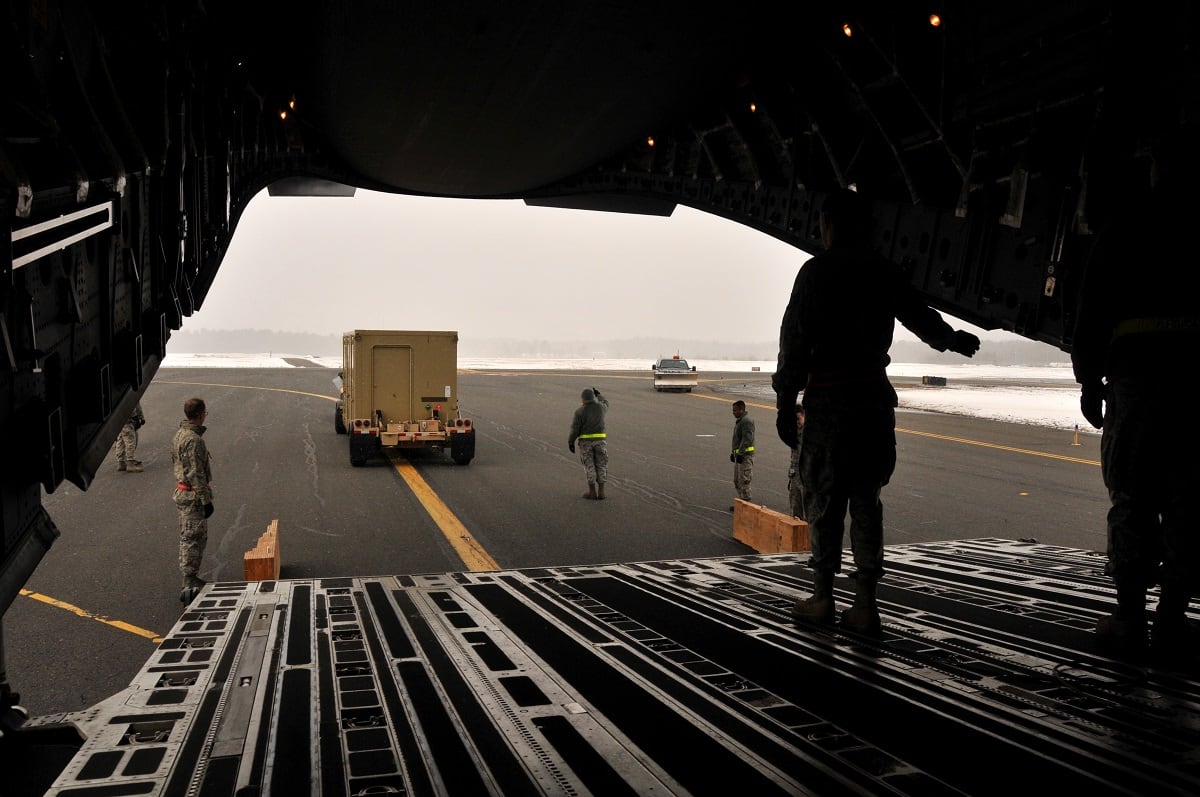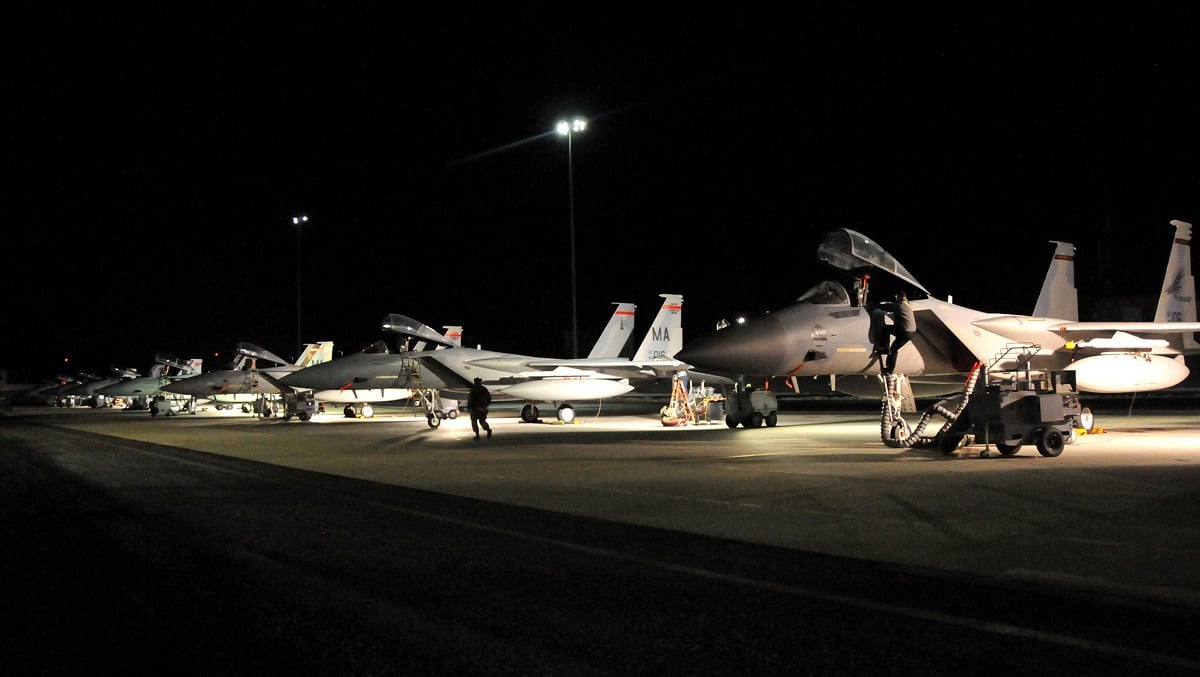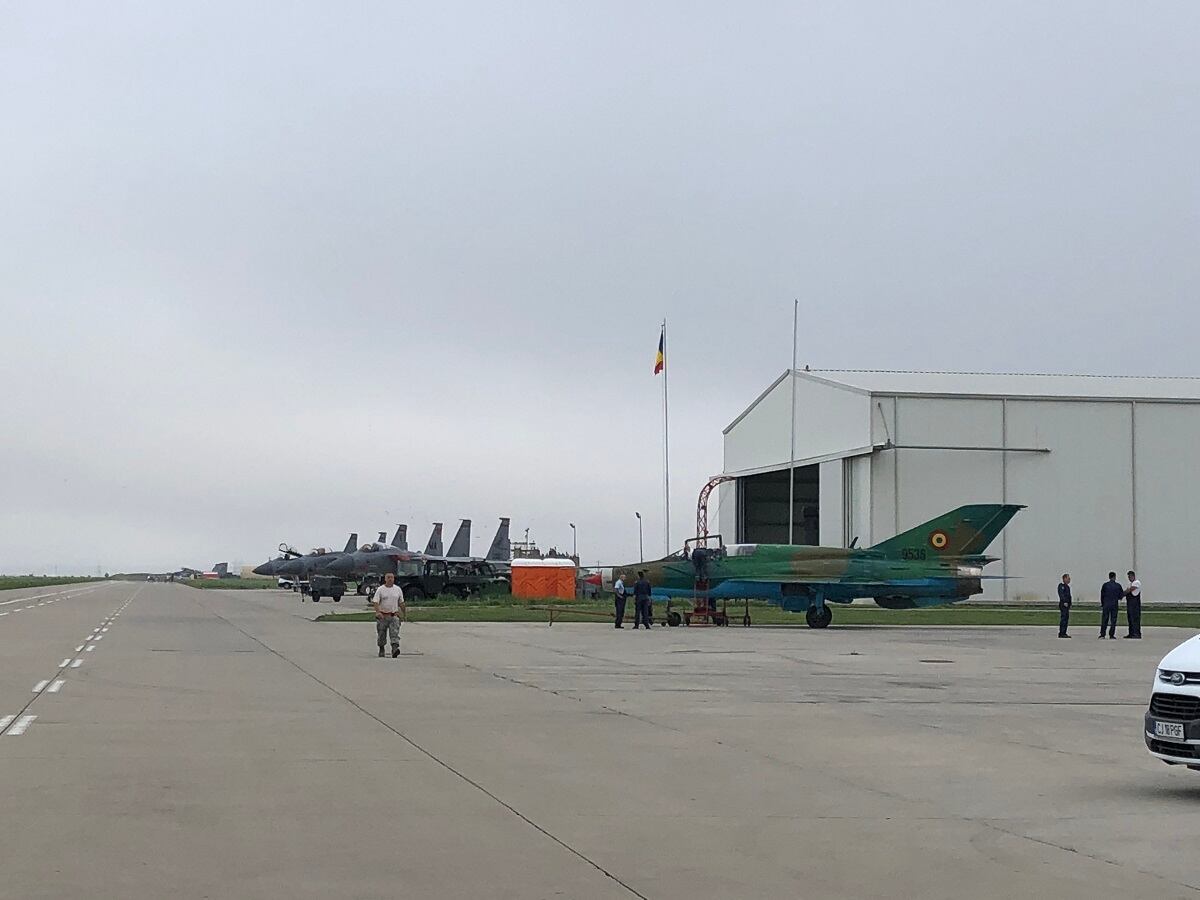CAMPIA TURZII, Romania — Despite a Thursday intercept of a Russian bomber by U.K. fighter jets conducting the air-policing mission over Romania, the U.S. Air Force F-15 squadron temporarily deployed just 300 miles away at Campia Turzii doesn’t expect to get involved in that effort anytime soon, its commander told Defense News on July 27.
According to the British Royal Air Force, a Russian Sukhoi Su-24 was flying westward over the Black Sea nearing NATO airspace when it was intercepted by U.K. Eurofighter Typhoons, which are temporarily deployed to Romania’s Mihail Kogalniceanu Air Base as part of the enhanced air-policing initiative.
But the American 131st Expeditionary Fighter Squadron, comprised of 12 F-15C/D Eagles and almost 300 airmen, has not been briefed on the Su-24 encounter and has not been tapped to join the air-policing mission, said Lt. Col. Andrew “Bishop” Jacob, an F-15 pilot who leads the 131st.
The air-policing mission is conducted by NATO nations to support allies like Romania or Estonia who are not able to protect their own airspace from incursions by Russian combat jets — or the occasional privately owned plane that goes astray.
RELATED

In contrast, the 131st is what the U.S. Air Force terms a “theater security package,” or TSP: a temporary deployment of combat aircraft and airmen, usually to Europe, for the purpose of training and strengthening bonds with allies.
“Here in the training scenario, you’ll notice that we take our time, we get everything squared away, and then we take off,” Jacob said. “When we have something like air policing — or an ‘active air,’ as we call it — that is a scramble, and that is a fast takeoff.”
“That’s a pretty intense and stressful environment,” Jacob said of the air-policing mission.
The type of relationship-building work being done by the 131st and the Romanian Air Force is softer, focusing more on building trust between U.S. and Romanian pilots by having them train and plan missions together. However, in an actual war, that improved relationship could come with increased efficiency.
“When a combat scenario actually happens, there’s almost never enough time to learn as it happens,” he said. “What we’re really doing is getting the knowledge required to minimize the fog and friction that typically happens in the first hours, days and weeks of a combat scenario. In the end, what that means is fewer lives lost on the allied side.”
The 131st is made up of 260 pilots, maintainers and support personnel from Barnes Air National Guard Base in Massachusetts and 40 airmen from Spangdahlem Air Base in Germany, as well as a couple additional personnel from other Air National Guard locations such as Portland, Oregon.
RELATED

The squadron arrived at Turzii in June and will depart in September. Until then, its members are flying in Romanian airspace with Romanian pilots, working base security and logistics together, and even hanging out for a friendly game of soccer.
Although intercepts between Russia and NATO are a hot, attention-grabbing topic in news stories, there has been a “significant reduction” in number over the past few years, said Gen. Tod Wolters, commander of U.S. Air Forces in Europe and Africa.
“That’s been over a pretty long period, and what we’ve seen for about the last year and a half is a leveling out of those intercepts,” he said in an interview earlier this month. “What we have seen is that the percentage of unsafe intercepts is very, very low. And from a trending perspective, that is trending in a direction that is demonstrating that deterrence has value.”
Defense News first spoke to Jacob on Thursday before news of the intercept had been released. During that interview, he said that the 131st could take on air-policing duties if directed.
“We are ready to go. As soon as the combatant commander asks for us, we will assume that posture. We are ready and waiting,” he said. “But we have not been asked.”
A high-alert mission like air policing would be much different than the TSP.
When pilots scramble to their jets for takeoff, they may only know which direction to head and what altitude to fly — not what the “target of interest” is or where it is located.
“That takes a lot of training and a lot of practice for the communication and coordination between the command-and-control agencies and us, about how we’re going to transmit that information back and forth so we know what we’re going to intercept and what information they’re looking for from us," Jacob said.
Although air policing is a peacetime effort, the fighter jets used for the mission are “hot cocked”— configured to be ready to launch as quickly as possible and equipped with live ammunition so that they can be able to respond if airspace is violated and they are attacked, he said.
But apparently, NATO didn’t see a need to involve the squadron, which continued its training flights Friday morning.
Valerie Insinna is Defense News' air warfare reporter. She previously worked the Navy/congressional beats for Defense Daily, which followed almost three years as a staff writer for National Defense Magazine. Prior to that, she worked as an editorial assistant for the Tokyo Shimbun’s Washington bureau.





